
A hotel is an establishment that provides paid lodging on a short-term basis. Facilities provided inside a hotel room may range from a modest-quality mattress in a small room to large suites with bigger, higher-quality beds, a dresser, a refrigerator, and other kitchen facilities, upholstered chairs, a flat-screen television, and en-suite bathrooms. Small, lower-priced hotels may offer only the most basic guest services and facilities. Larger, higher-priced hotels may provide additional guest facilities such as a swimming pool, a business center with computers, printers, and other office equipment, childcare, conference and event facilities, tennis or basketball courts, gymnasium, restaurants, day spa, and social function services. Hotel rooms are usually numbered to allow guests to identify their room. Some boutique, high-end hotels have custom decorated rooms. Some hotels offer meals as part of a room and board arrangement. In Japan, capsule hotels provide a tiny room suitable only for sleeping and shared bathroom facilities.
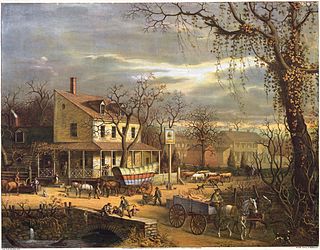
Inns are generally establishments or buildings where travelers can seek lodging, and usually, food and drink. Inns are typically located in the country or along a highway. Before the advent of motorized transportation, they also provided accommodation for horses.

A motel, also known as a motor hotel, motor inn or motor lodge, is a hotel designed for motorists, usually having each room entered directly from the parking area for motor vehicles rather than through a central lobby. Entering dictionaries after World War II, the word motel, coined as a portmanteau of "motor hotel", originates from the Milestone Mo-Tel of San Luis Obispo, California, which was built in 1925. The term referred to a type of hotel consisting of a single building of connected rooms whose doors faced a parking lot and in some circumstances, a common area or a series of small cabins with common parking. Motels are often individually owned, though motel chains do exist.

Down and Out in Paris and London is the first full-length work by the English author George Orwell, published in 1933. It is a memoir in two parts on the theme of poverty in the two cities. Its target audience was the middle- and upper-class members of society—those who were more likely to be well educated—and it exposes the poverty existing in two prosperous cities: Paris and London. The first part is an account of living in near-extreme poverty and destitution in Paris and the experience of casual labour in restaurant kitchens. The second part is a travelogue of life on the road in and around London from the tramp's perspective, with descriptions of the types of hostel accommodation available and some of the characters to be found living on the margins.
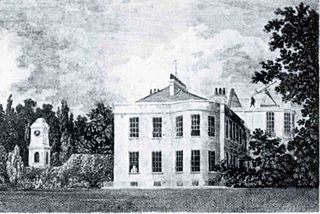
Highbury is a district in North London and part of the London Borough of Islington, in Greater London, that was owned by Ranulf, brother of Ilger, and included all the areas north and east of Canonbury and Holloway Roads.
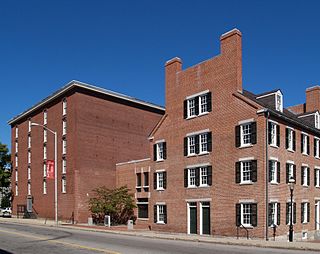
A boarding house is a house in which lodgers rent one or more rooms on a nightly basis, and sometimes for extended periods of weeks, months, and years. The common parts of the house are maintained, and some services, such as laundry and cleaning, may be supplied. They normally provide "room and board," that is, some meals as well as accommodation.
Arlington House may refer to:
An Olympic Village is a residential complex built or reassigned for the Olympic Games in or nearby the host city for the purpose of accommodating all of the delegations. Olympic Villages are usually located close to the Olympic Stadium within an Olympic Park.

This article describes the hotels in London, England.

Northumberland Avenue is a street in the City of Westminster, Central London, running from Trafalgar Square in the west to the Thames Embankment in the east. The road was built on the site of Northumberland House, the London home of the Percy family, the Dukes of Northumberland between 1874 and 1876, and on part of the parallel Northumberland Street.

Hockley Heath is a large village and civil parish in the Arden area mostly within the Metropolitan Borough of Solihull, West Midlands, England. It incorporates the hamlet of Nuthurst, and has a history dating back to the year 705 AD as a wood owned by Worcester Cathedral. The parish, known as Nuthurst cum Hockley Heath, is to the south of the West Midlands conurbation, 12 miles (19 km) southeast of Birmingham 5.5 miles (8.9 km) from Solihull town centre and 12.5 miles (20.1 km) north of Stratford-upon-Avon. The village forms part of the border with Warwickshire and the District of Stratford-on-Avon to the south, with some parts of the village on either side of the border. According to the 2001 census, the parish had a population of 6,771, being measured at the 2011 Census as 2,038.

Mills House No. 1 or the Mills Hotel at 160 Bleecker Street in Greenwich Village, Manhattan, New York City was built as a hotel for poor men. It was funded by banker Darius Ogden Mills and designed by Ernest Flagg and opened in 1897. The building is now The Atrium.

"Common lodging-house" is a Victorian era term for a form of cheap accommodation in which the inhabitants are all lodged together in the same room or rooms, whether for eating or sleeping. The slang terms dosshouse and flophouse designate roughly the equivalent of common lodging-houses. The nearest modern equivalent is a hostel.

Harry Bell Measures (1862–1940) was an English architect.

An apartment hotel or aparthotel is a serviced apartment complex that uses a hotel-style booking system. It is similar to renting an apartment, but with no fixed contracts and occupants can "check out" whenever they wish, subject to the applicable minimum length of stay imposed by the company.

Arlington House is a hostel for homeless men on Arlington Road in Camden Town, London that opened in 1905.
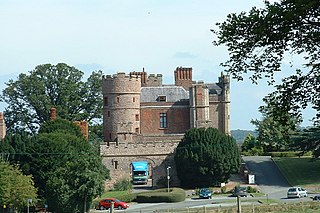
Rowton Castle, near Shrewsbury, Shropshire, England, is a Grade II* listed country house that was once the home of the Royal National College for the Blind before it moved to its present location in Hereford. This 17th-century castle is surrounded by 17 acres of gardens, and is approximately six miles (9.7 km) from Shrewsbury. It is currently used as a wedding venue, hotel and restaurant.

The Carlton Hotel was a luxury hotel in London that operated from 1899 to 1940. It was designed by the architect C. J. Phipps as part of a larger development that included the rebuilding of Her Majesty's Theatre, which is adjacent to the hotel site. The Carlton was originally run by the Swiss hotelier César Ritz, with Auguste Escoffier as the head chef. In its early days it was one of London's most fashionable hotels and drew some customers away from the Savoy Hotel, which Ritz and Escoffier had previously managed.

Ellenborough Park Hotel is a country house hotel in Southam, about 2+1⁄2 miles (4.0 km) northeast of the centre of Cheltenham, Gloucestershire, England. It is a Grade II* listed building.
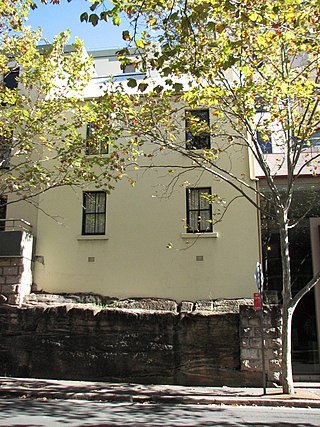
71 Harrington Street, The Rocks are heritage-listed serviced apartments and former terrace houses and shops located at 71 Harrington Street, in the inner city Sydney suburb of The Rocks in the City of Sydney local government area of New South Wales, Australia. It was built from 1860. It is also known as Sailors Return Hotel; Stafford Apts. and 75 Harrington Street; Clocktower Development. The property is owned by Property NSW, an agency of the Government of New South Wales. It was added to the New South Wales State Heritage Register on 10 May 2002.


















